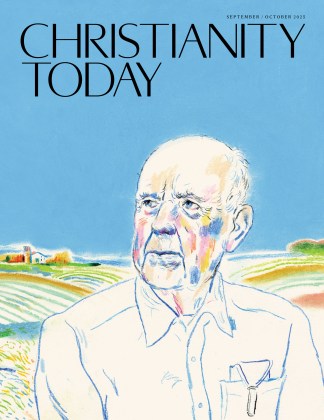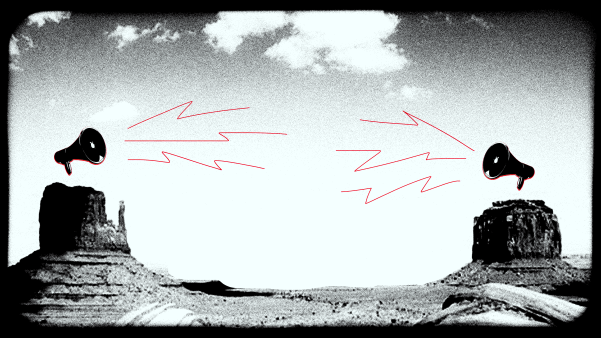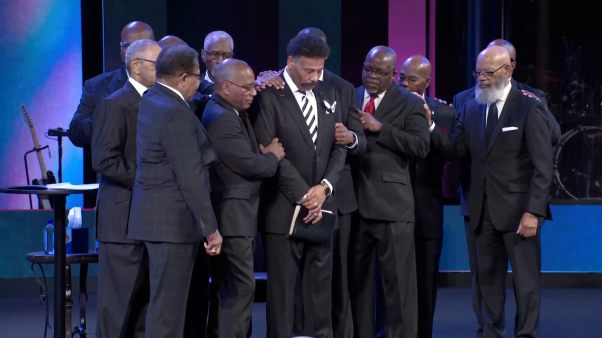The best preaching is pictorial. It brings listeners into an experience of seeing the truth. Far from despising imagination (as if what is imaginative is in the nature of fantasy or of the fantastic), it uses it, exploits it, plays up to it, in a score of legitimate ways. After all, the mind’s ability to form images is one of its most extraordinary endowments.
The sermon’s pictorial elements are many, and in the hands of a master craftsman they are as rich and varied as the colors on a Murillo canvas. They include everything from a well-turned phrase of half-a-dozen words to an illustration that requires a full five minutes to unfold.
I once went fishing with some friends on Florida’s Lake Okeechobee. Before we started from shore our guide had asked what we wanted to “go after”: black bass, speckled perch, catfish, or what. It was not enough for us to say we wanted to fish. He had to know what we wanted to catch lest he take us to the wrong part of the lake.
The preacher’s pool of pictorial possibilities is a big one. He needs to know where to go for what will best serve his purpose.
To begin with the obvious, let him draw from that inexhaustible reservoir—the Bible. It is no accident that sermons on the parables and on Bible characters achieve a level of audience interest several notches above the average. They have a cinematic quality. Theology in abstract propositions can be leaden. Yet thrown pictorially, dramatically, on the screen of the mind, theology is lively, exciting, and congregation-involving.
To be sure, this type of preaching has hazards. It can be casual, superficial, cheap. It can defeat itself if the imagination runs riot, mistaking sheer fancy for eternal truth. On the other hand, such masters of this type of sermon as Whyte, Matheson, Macartney, and Buttrick tell us once for all that it need not be stupidly banal: it can be enrichingly brilliant.
After all, what Bible-character sermons do is to make truth understandable by making it “seeable.” The sermon thus becomes a species of incarnation—the Word made flesh. And the effect? “We beheld …!” Here is the bull’s-eye that is struck by the old Arab saying: “He is the best speaker who can turn the ear into an eye.”
But the Bible as a source of picture-preaching has offerings to make to us other than biographical or parabolic. It abounds in words and phrases that spark the imagination. It is a treasury of metaphor and simile.
You let out your line, for example, in the Book of Judges, and your “trawling eye” begins looking for signs of a “strike.” Presently you have this in hand: “But the Spirit of the Lord came upon Gideon,” which, you quickly note, reads in Hebrew, “The Spirit of the Lord clothed himself with Gideon.” Frail human flesh suddenly becomes invincible because the might of the Lord takes it over and wears it like a garment, moves about in it to the achievement of the divine purpose!
Or this: “The stars in their courses fought against Sisera.” Whether we have eyes to see it and humility to confess it or not, the nature of reality is such that in the end evil is doomed and righteousness is vindicated. We may make fools of ourselves but not of God. His is the last word.
The Bible’s waters swarm with similitudes. Let the preacher make them his own. Or, at the least, let them suggest others that, with disciplined hand, he can place in his sermon to give vividness and zest and interest to this tremendous thing he has to communicate.
Preaching pictorially can be done only, as Paul Scherer has reminded us, “by exchanging the commonplace phrase, the torpid, sluggish word, for words that glow and move and have some being, leaving those that lie down on the page with their four legs in the air, for others that gird their loins to run and not be weary, to walk and not faint.”
It was not, let me frankly say, with the following sermon in mind that I expressed the foregoing thoughts. But having come upon James Black’s Days of My Autumn, I found in it this sermon on Simon, the tanner of Joppa, which has in it, again and again, the glint of the pictorial.
For nearly thirty years Dr. Black occupied the distinguished pulpit of St. George’s West, Edinburgh. To many of us he is best known for his Warrack Lectures entitled The Mystery of Preaching. The sermon presented here was preached in the 1940s.
For one thing, the preacher wraps his theme—prejudice and exclusiveness as contradictions of the universality of the Gospel—around the figure of a man. The focus on the little-known tanner immediately imparts freshness to the approach.
Furthermore, the imagination is evoked in lively fashion by the conversation that the preacher fancies between Peter and anyone who might have predicted that the apostle would lodge under the same roof with a despised tanner. The imputed outburst, “Not on your life!” is a delightful piece of conversational updating.
Notice will be taken, also, of the vividness and vigor of such phrases and clauses as “the big free dream would have been shackled,” “the first rope snapping,” “the ropes men tie about God,” “the cursed cords of shame,” “the muck in men’s thoughts,” and “the clean winds of God.”
Keep an eye open, finally, for the good use that is made of our Lord’s familiar figure, “Make the inside of the cup clean.”










